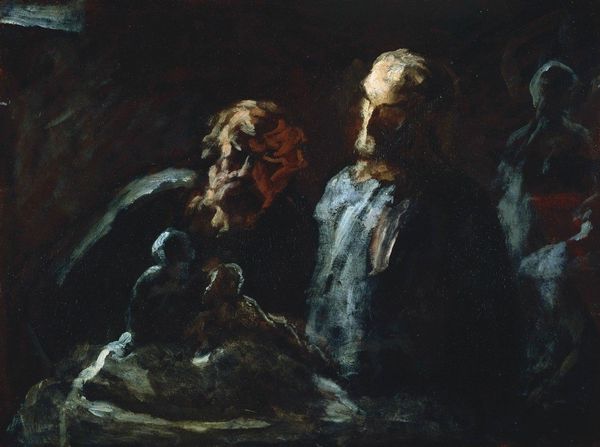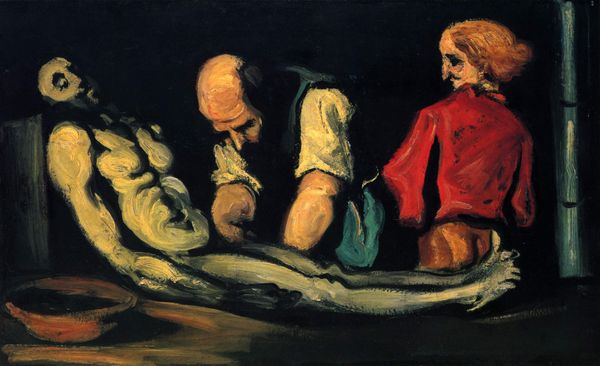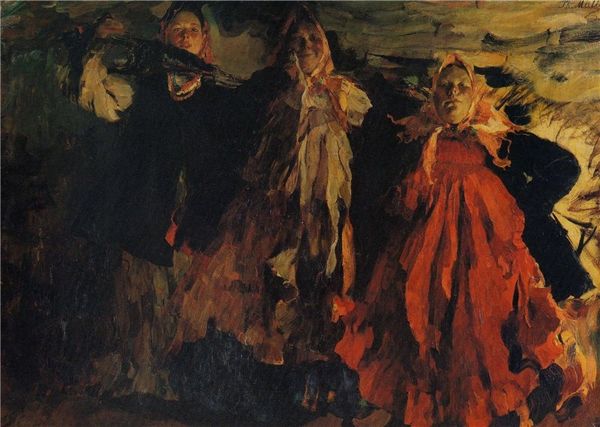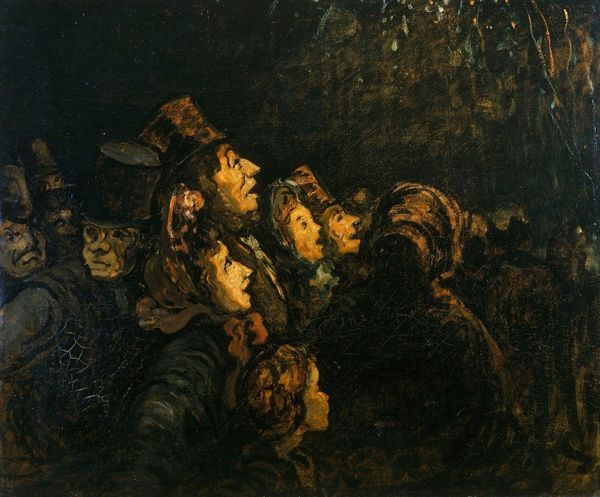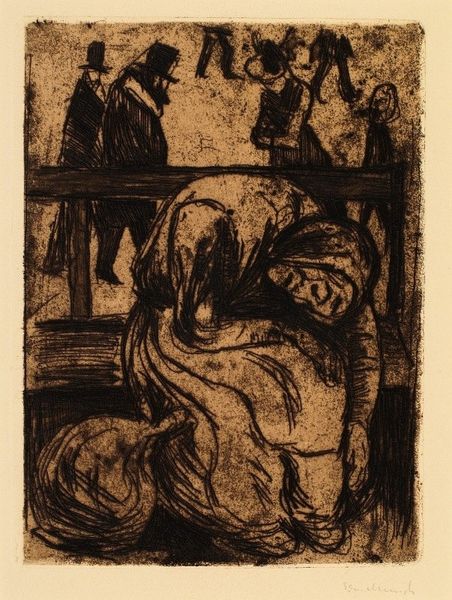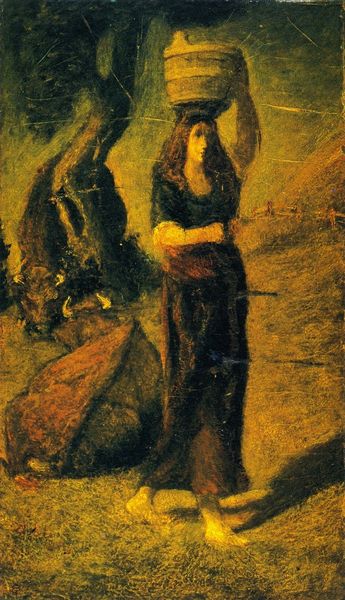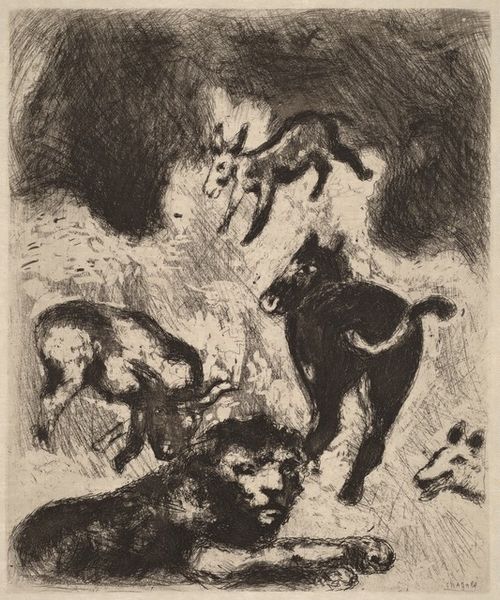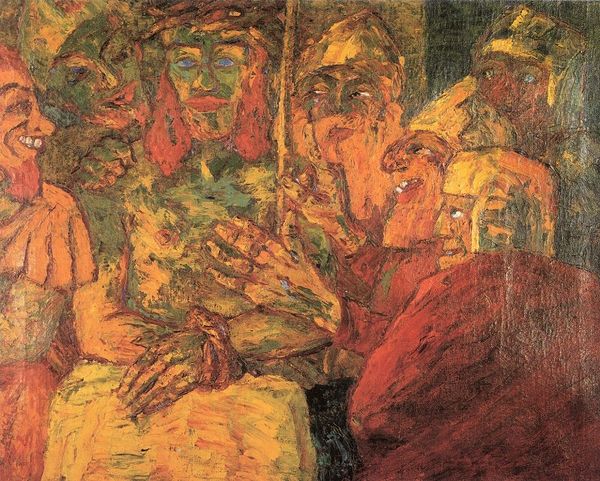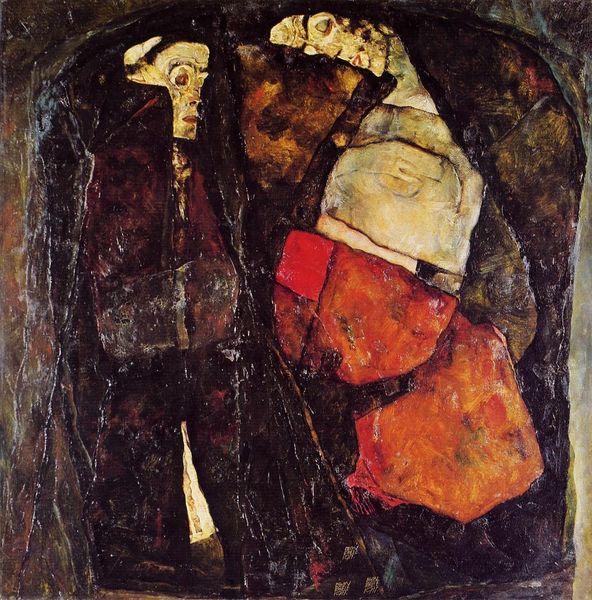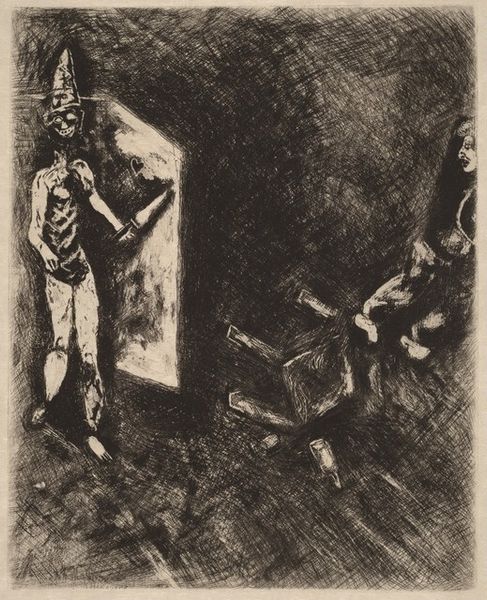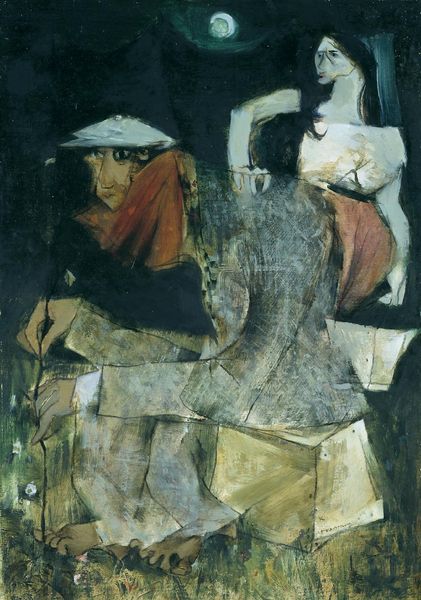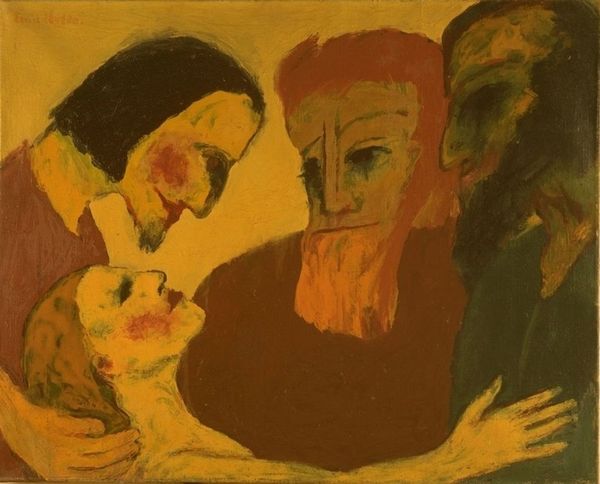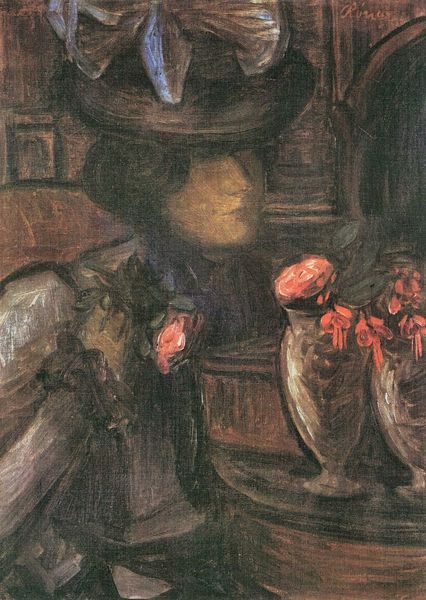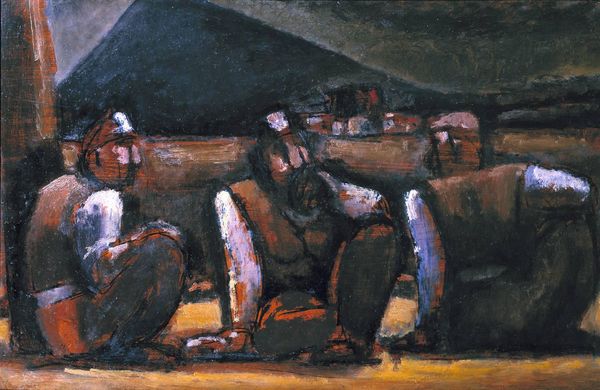
painting, oil-paint
#
portrait
#
16_19th-century
#
painting
#
oil-paint
#
oil painting
#
male-portraits
#
group-portraits
#
academic-art
#
portrait art
#
realism
Copyright: Public domain
Editor: Daumier's "Two Sculptors," painted in 1873, seems like a world captured in shades of brown and muted colors. The texture of the oil paint gives a certain rawness, almost like clay itself. What do you see in this piece, beyond just a representation of two artists? Curator: Initially, the interplay of light and shadow arrests my attention. Note how Daumier employs chiaroscuro, not to merely illuminate form, but to create a visual hierarchy. The brightest areas fall upon the sculptors' heads and the clay sculpture they examine, drawing the eye and establishing them as the primary subjects. Further, observe the tension between the rough, almost gestural brushstrokes and the carefully modeled faces. It is not photorealism, but a concern for the essential structure. Editor: So it's less about what is depicted and more about *how* it’s depicted? The brushwork does seem so energetic, but confined. Curator: Precisely. The composition, built on a pyramidal structure culminating in the head of the central sculptor, imparts stability. It offers a grounding visual language amidst the implied frenetic creation. We must ask what those artistic choices elicit from the viewer. What response does it seek to evoke? Editor: The darker tones in the background make the figures seem more intimate and secluded, though…Almost a peek into their studio. It creates a unique tension with the pyramidal structure that you pointed out earlier. Curator: Indeed. The relationship between these visual strategies forms the groundwork of meaning. Considering only what's *in* the artwork - shape, color, light - reveals a discourse far richer than surface representation. Editor: Thank you, looking beyond the literal scene really brought so much more depth to how I perceived Daumier's work. Curator: It is these formal elements, carefully interwoven, that allows the piece to continually provoke response and interpretation, despite being created in 1873.
Comments
No comments
Be the first to comment and join the conversation on the ultimate creative platform.
